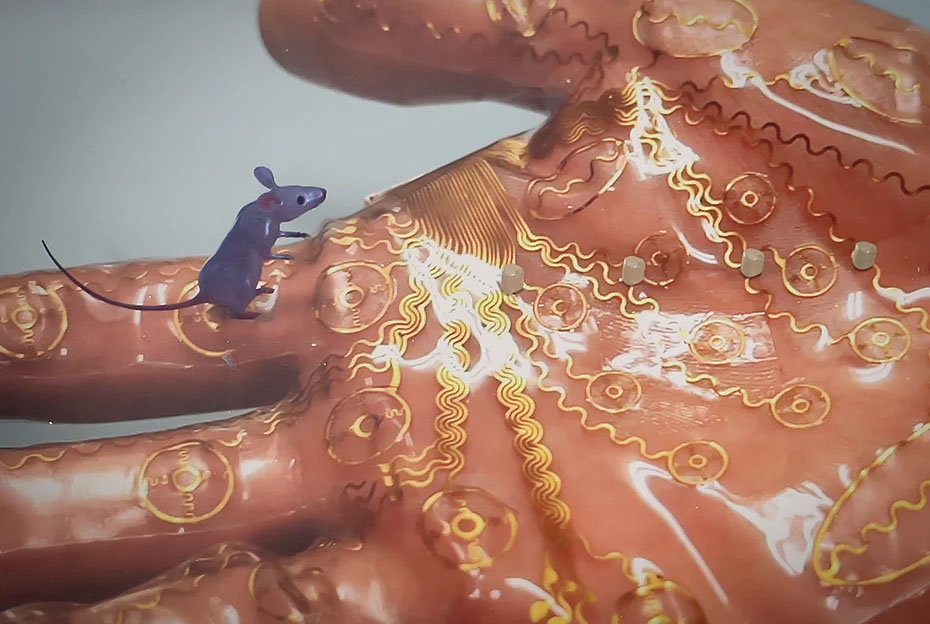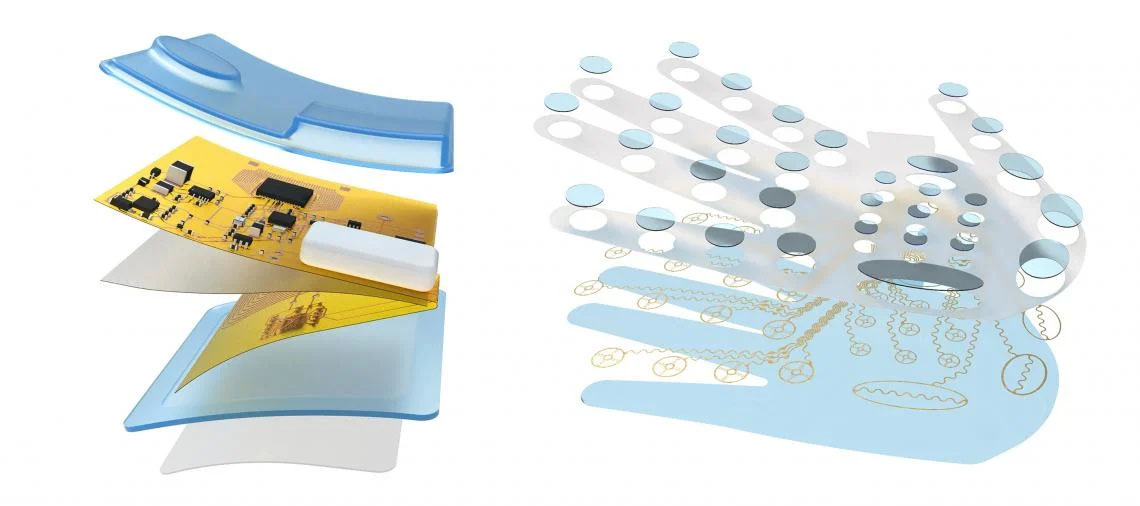| Mar 10, 2023 |
Ultrathin, wireless palm patch brings touch to virtual reality
(Nanowerk News) The sense of touch may soon be added to the virtual gaming experience, thanks to an ultrathin wireless patch that sticks to the palm of the hand. The patch simulates tactile sensations by delivering electronic stimuli to different parts of the hand in a way that is individualized to each person’s skin.
|
|
Developed by researchers at City University of Hong Kong (CityU) with collaborators and described in the journal Nature Machine Intelligence ("Encoding of tactile information in hand via skin-integrated wireless haptic interface"), the patch has implications beyond virtual gaming, as it could also be used for robotics surgery and in prosthetic sensing and control.
|
|
‘Haptic’ gloves, that simulate the sense of touch, already exist but are bulky and wired, hindering the immersive experience in virtual and augmented reality settings. To improve the experience, researchers led by CityU biomedical engineer Yu Xinge developed an advanced, wireless, haptic interface system called ‘WeTac’.
|
 |
| With the 'WeTac' system, the user can feel an augmented-reality mouse running on the palm as tactile sensation is stimulated with electronic current through the hand patch. (Image: Dr Yu Xinge’s research group, CityU)
|
|
It works by initially decoding the user’s specific sensitivity map from the palm of their hand. “The sensitivity of tactile sensation varies widely on different parts of the hand and from one person to another,” explains Xinge. As part of their research, the scientists measured the tactile sensation thresholds of 14 healthy volunteers of different genders and ages. They found that the palms of women and young people were relatively more sensitive to touch compared to men and the elderly, respectively. Also, people involved in manual jobs, like cleaning, who had thicker skin and/or calluses on their hands, required stronger electrical current pulses to elicit a sensation compared to those who didn’t.
|
|
WeTac works by sending electronic impulses from a small device placed on the forearm to an ultrathin palm patch containing hydrogel-based electrodes. The strength of the impulses is individualised according to each person’s sensitivity map so that they aren’t too weak as not to be felt or so strong that they are painful. The impulses can be sent to 32 different sites on the palm to simulate tactile sensations, including pressure and movement.
|
|
The palm patch is very flexible, thin (220 µm to 1 mm), and porous to prevent sweat accumulation. The forearm device is also flexible, light (19.2 g), and small (5 cm x 5 cm x 2.1 mm). It can be charged wirelessly to 95% power within 15 minutes and can work continuously for an hour while maintaining a relatively low temperature to avoid overheating. The whole system can connect via Bluetooth to a mobile device to precisely control and monitor the intensity of the electronic current that flows to the hand.
|
 |
| The new tactile system consists of a driver unit (left) and a hydrogel-based electrodes hand patch (right). The driver unit is controlled by a mobile devices and outputs electric current to the user's hand through 32 sites on the hand patch. (Image: Dr Yu Xinge’s research group, CityU)
|
|
“WeTac has been successfully integrated into virtual and augmented reality scenarios, and synchronised with robotic hands through Bluetooth low energy communication,” says Xinge. “Users can feel virtual objects in different scenarios, like grasping a tennis ball, touching a cactus, or feeling a mouse running on the hand.”
|
|
The team is now working on expanding the patch’s functionality so that it can also simulate feelings of heat and textiles. Communications are ongoing with industry for applications in the fields of entertainment, training and healthcare.
|


